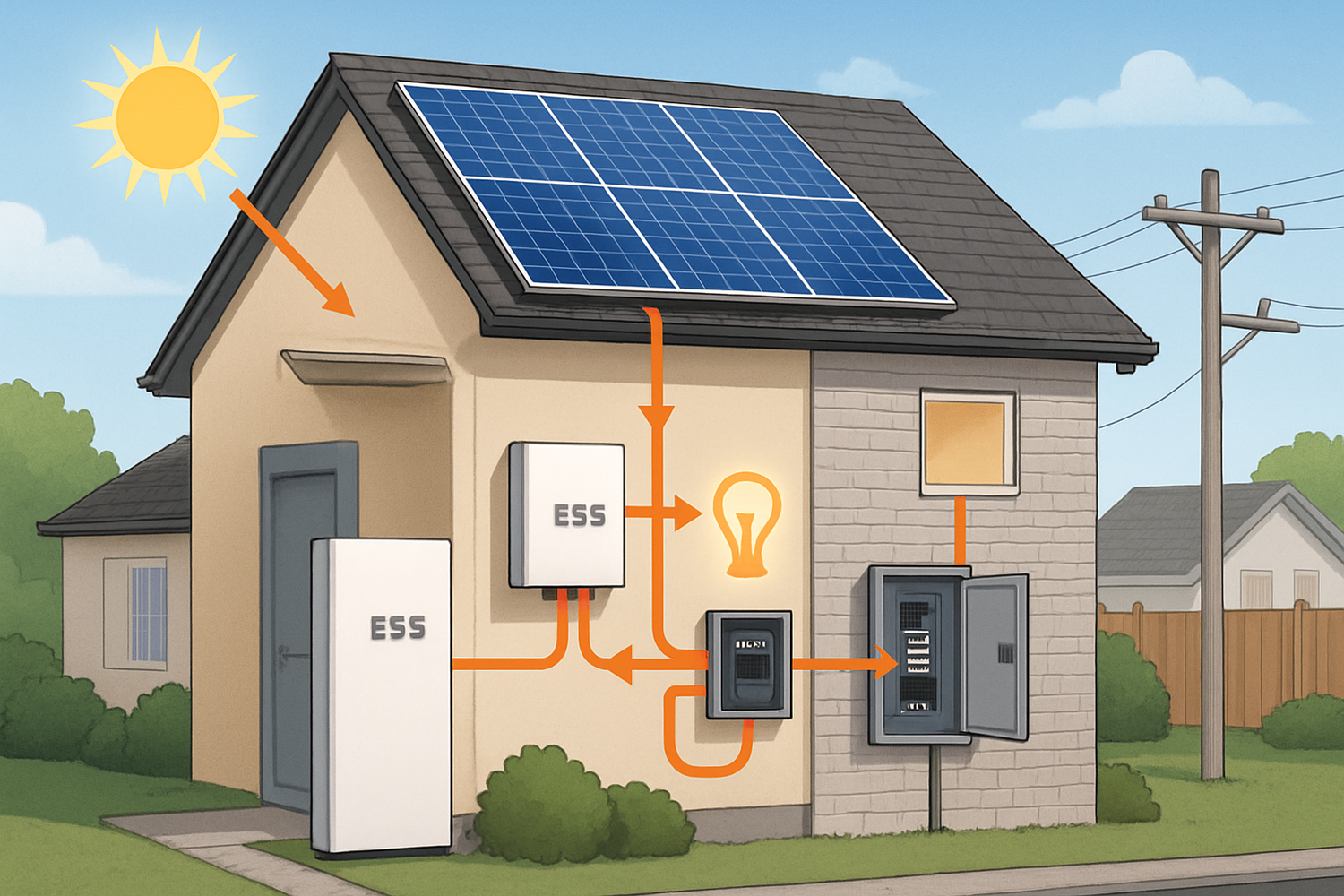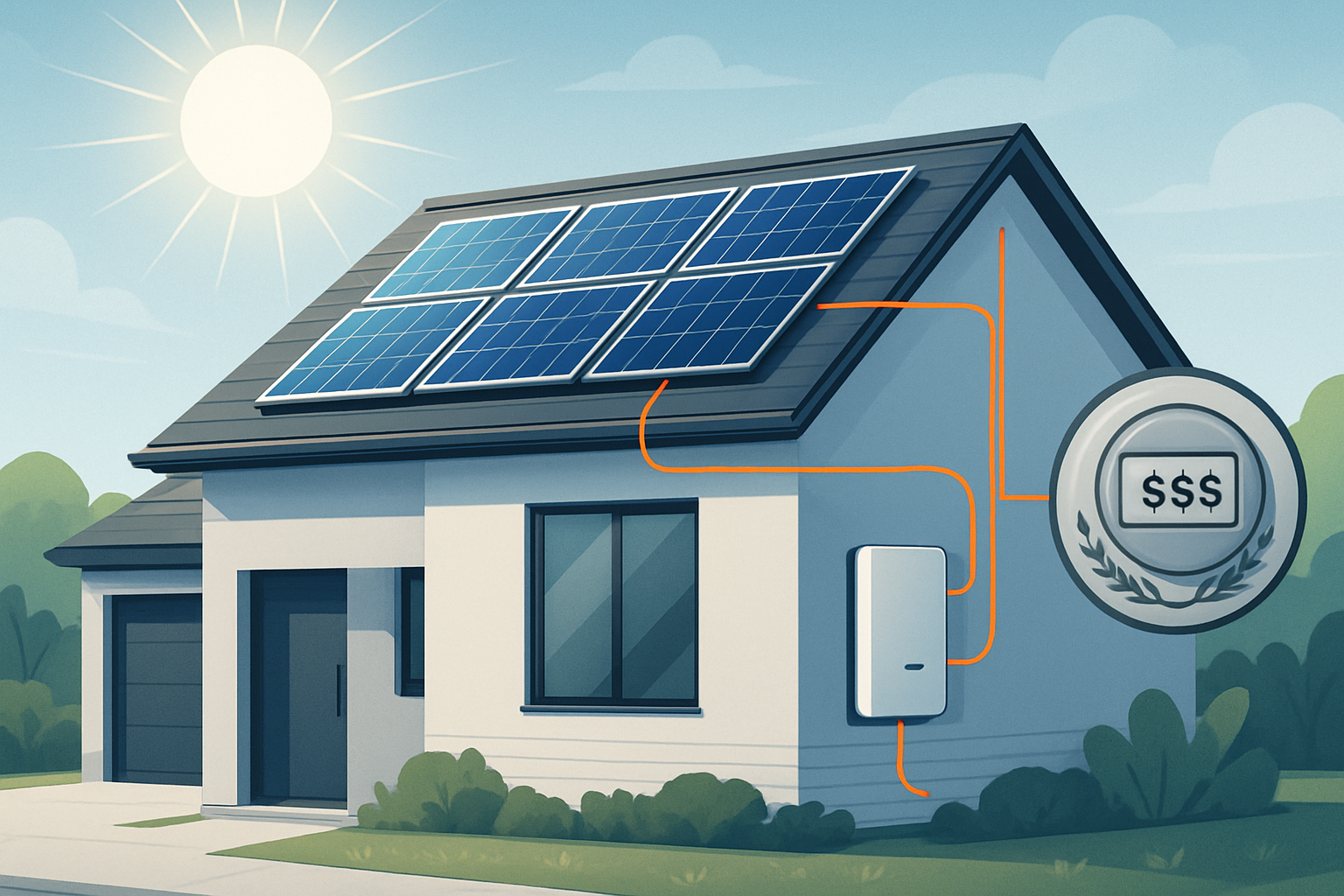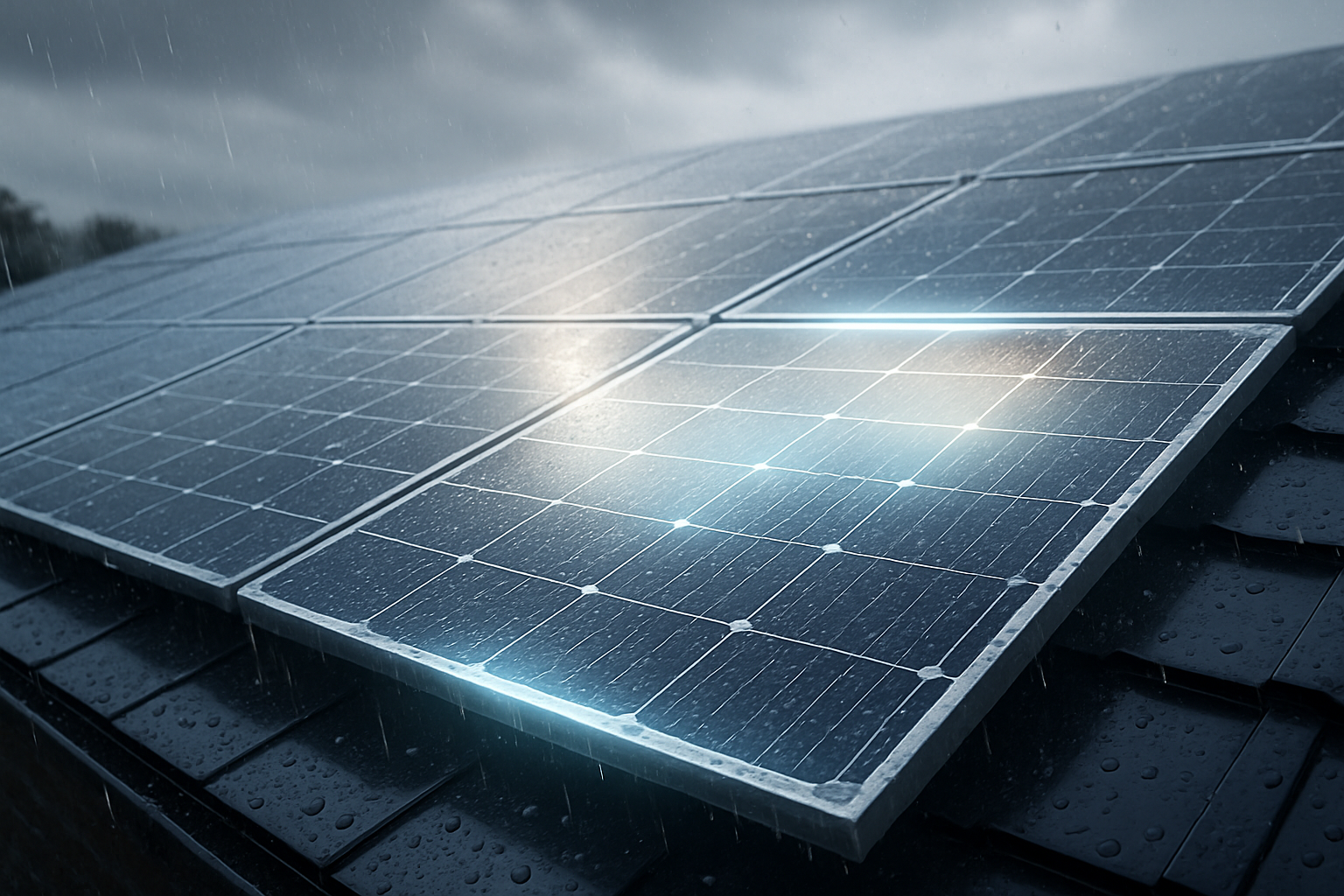Introduction: The Evolving Landscape of Solar Energy
Solar energy has transformed how we power homes and businesses, offering a clean and sustainable alternative to traditional electricity sources. Many individuals and organizations recognize the financial and environmental benefits of adopting solar technology. A key consideration for anyone exploring solar is the payback period: how long will it take for the savings on electricity bills to offset the initial investment?
The addition of battery storage, often as part of an Energy Storage System (ESS), introduces a new dimension to this calculation. While batteries represent an additional upfront cost, they also unlock deeper savings and provide significant advantages. This discussion examines the interplay between solar panels and ESS, considering whether integrating battery storage can ultimately shorten your financial payback time or enhance the overall value proposition.
Understanding Solar Payback: Beyond Grid Connection
The Traditional Solar Payback Model
Traditionally, the payback period for a solar panel system focuses on the savings generated by reducing or eliminating reliance on grid electricity. You generate your own power, use it, and potentially sell any surplus back to the utility through net metering programs. The average payback period for residential solar systems can range from 6 to 10 years, depending on factors like your location, local electricity rates, system size, and available incentives.
The calculation is straightforward: divide the total system cost (minus incentives) by the annual savings. For instance, a 30% federal tax credit can significantly reduce the initial investment, making solar more accessible and shortening the time to break even.
The Impact of Grid Dynamics
Utility rate structures are not static. Many regions have time-of-use (TOU) tariffs, where electricity prices vary throughout the day, often increasing during peak demand hours (e.g., evenings) and decreasing during off-peak times. Without energy storage, solar panels produce most of their power during midday when sunlight is abundant, but demand (and often prices) might be lower. This means you might export energy at low rates and then import it at higher rates when the sun sets. This dynamic can reduce the financial benefit of solar alone, potentially extending the effective payback period.
Energy Storage Systems (ESS): A Catalyst for Solar Value

How ESS Enhances Solar Value
Energy Storage Systems, particularly those utilizing advanced battery technology, fundamentally change how you interact with your solar power. Instead of sending excess solar generation directly back to the grid, you can store it for later use. This capability offers several key benefits:
- Maximized Self-Consumption: You can store solar energy generated during the day and use it at night or during cloudy periods, significantly reducing the amount of electricity you need to draw from the grid. This directly lowers your utility bills.
- Energy Arbitrage: For those on TOU tariffs, an ESS allows you to charge batteries when electricity prices are low (e.g., midday solar production or off-peak grid rates) and discharge them during high-priced peak hours. This strategy, known as peak shaving or load shifting, can lead to substantial savings.
- Backup Power and Resilience: In the event of a grid outage, an ESS can provide seamless backup power for your home or business, keeping essential appliances running. This offers significant energy independence and peace of mind, especially in areas prone to blackouts.
- Grid Support Services: Beyond individual benefits, battery storage contributes to overall grid stability by balancing supply and demand, reducing strain on infrastructure, and enabling services like frequency regulation.
The Role of Lithium Batteries in ESS
Lithium iron phosphate (LiFePO4) batteries are a cornerstone of modern ESS. Known for their high performance, safety, and reliability, these batteries are a popular choice for both residential and commercial applications. These batteries are integrated into home energy storage systems, often combined with hybrid inverters and solar panels to create a comprehensive energy management solution. Furthermore, reliable off-grid solar solutions, suitable for homes, farms, or remote cabins, depend heavily on robust lithium battery storage to ensure consistent power supply without grid connection.
Analyzing the Payback Period with ESS Integration
Initial Investment vs. Long-Term Savings
Adding an ESS increases the upfront cost of a solar installation. In 2016, battery prices were observed to be high, starting at USD 1,100 per kilowatt-hour (kWh) for small systems. However, the cost of utility-scale battery storage saw a remarkable 93% decline from 2010 to 2024, reaching USD 192/kWh, driven by manufacturing scale-up and improved efficiencies.
While the direct payback period calculation for solar plus storage can sometimes appear longer due to this higher initial outlay, the enhanced savings and benefits often justify the investment. You gain greater control over your energy use and reduce vulnerability to fluctuating utility rates. Financial incentives, such as the 30% federal tax credit for complete solar installations (including storage), can help offset these costs, potentially making the combined system's payback period comparable to or only slightly longer than solar alone.
| Feature | Solar Only | Solar + Energy Storage System (ESS) |
|---|---|---|
| Upfront Cost | Lower | Higher |
| Grid Reliance | Moderate (depends on net metering) | Low (especially during peak hours) |
| Peak Hour Savings | Limited (depends on export rates) | Significant (through energy arbitrage) |
| Backup Power | None (without specific setup) | Yes (for critical loads) |
| Self-Consumption | Lower | Higher |
| Energy Independence | Moderate | High |
Factors Influencing ESS Payback
The economic viability of energy storage systems is complex. It depends on their operational profile within a specific electricity market, their response to price signals, and their ability to perform functions like energy arbitrage and frequency regulation. Each application impacts the battery’s charge-discharge cycles, degradation rates, and revenue streams.
The Levelized Cost of Storage (LCOS) is a metric used to compare the true cost of owning and operating various storage assets. While estimating LCOS for standalone storage can be challenging, hybrid systems combining solar PV with battery storage are increasingly deployed to enhance grid flexibility. These systems allow electricity to be shifted to periods of higher demand or market value, improving system reliability.
Real-World Impact and Future Outlook
Case Studies and Data Insights
Data from the International Renewable Energy Agency (IRENA) highlights the growing competitiveness of hybrid solar-plus-storage systems. In 2024, seventeen operational hybrid projects in the United States, combining solar PV and battery storage, achieved a weighted average Levelized Cost of Electricity (LCOE) of USD 0.079/kWh. This figure aligns with the midpoint of the LCOE range for combined-cycle gas turbines (USD 0.077/kWh) and is below that of coal (USD 0.119/kWh). In Australia, eight hybrid projects with solar, wind, and battery storage reported an even lower weighted average LCOE of USD 0.051/kWh.
These figures demonstrate that batteries add significant value by shifting electricity from times of high generation to periods of high demand or market value, thereby enhancing grid reliability.
The U.S. Department of Energy's *Solar Futures Study* projects that solar energy capacity will need to expand rapidly to support a decarbonized electric grid. As more variable renewable energy resources like solar are deployed, energy storage becomes crucial for stabilizing the grid and powering critical building loads during outages, enhancing community resilience.
Achieving Energy Independence and Resilience
Beyond financial metrics, an ESS provides invaluable benefits related to energy independence and resilience. You gain greater control over your energy supply, reducing reliance on external power sources. This is particularly appealing for those seeking to minimize their grid connection or establish robust off-grid systems. The ability to maintain power during outages ensures comfort and security, which is a significant, non-monetary return on investment. Energy storage empowers you to manage your power consumption more efficiently, aligning with a sustainable future.
Your Path to Enhanced Energy Solutions
While the initial cost of integrating an Energy Storage System with your solar panels requires careful consideration, the long-term advantages often outweigh this expense. An ESS empowers you to maximize the value of your solar generation, navigate dynamic electricity pricing, and achieve a higher degree of energy independence and security. With ongoing advancements in lithium battery technology and the increasing competitiveness of hybrid systems, the case for combining solar with storage becomes increasingly compelling. You are investing not just in clean energy, but in a more resilient and cost-effective energy future.





Leave a comment
All comments are moderated before being published.
This site is protected by hCaptcha and the hCaptcha Privacy Policy and Terms of Service apply.